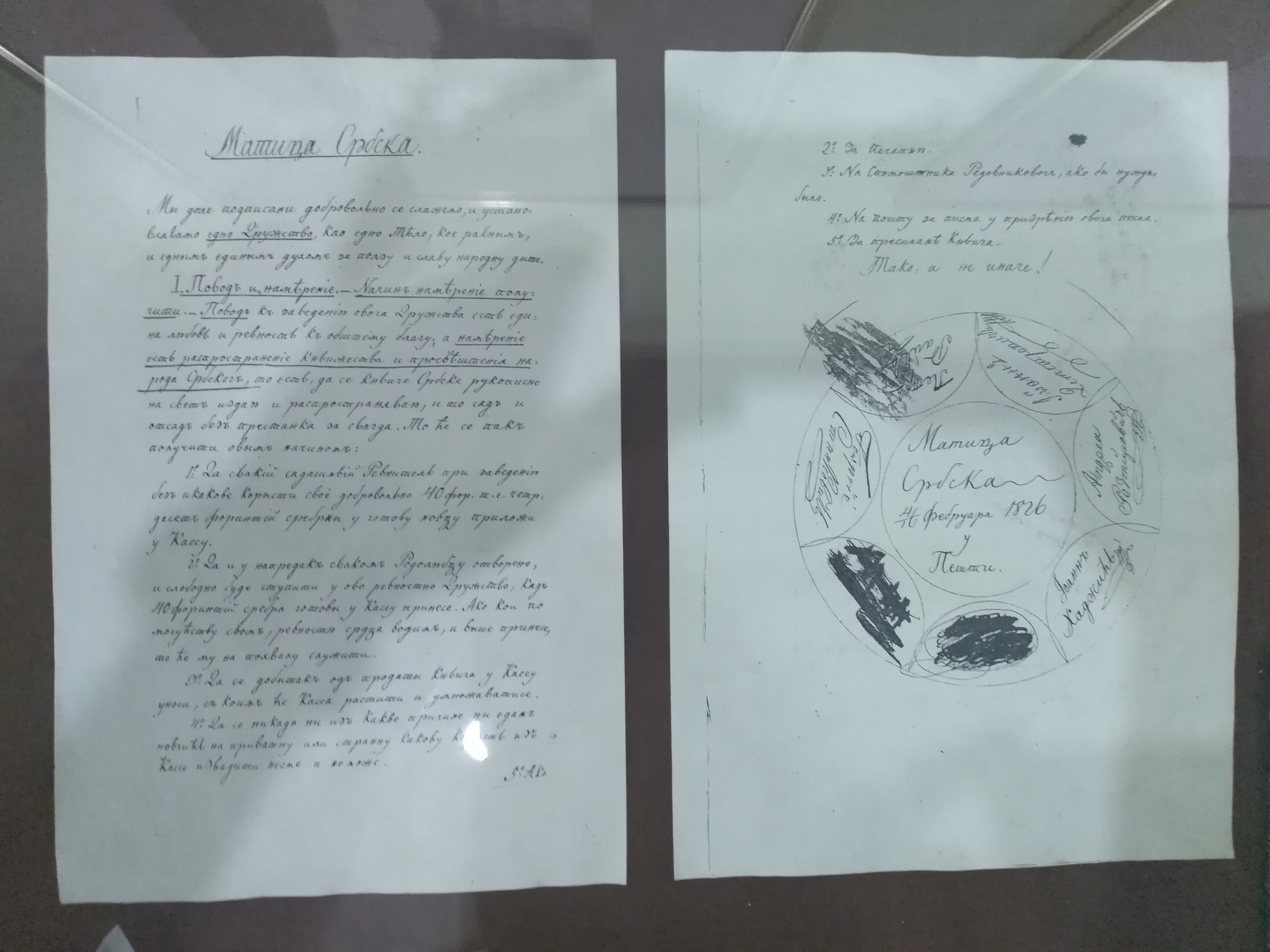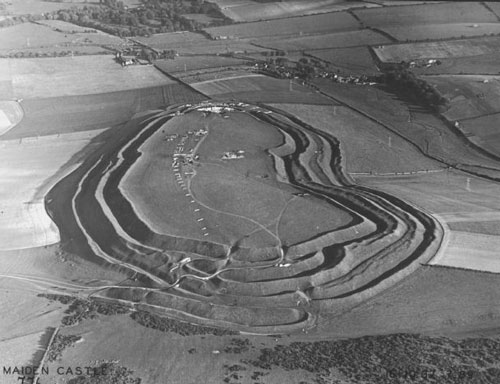|
Miloje Vasić
Miloje Vasić ( sr-Cyrl, Милоје Васић; 16 September 1869 – 4 November 1956) was a Serbian archaeologist, regarded as one of the most distinguished representatives of the humanistic studies in Serbia.Inscription below his picture in the Vinča museum Professor at the University of Belgrade and member of the Serbian Academy of Sciences and Arts, he was the first educated Serbian archaeologist, and is considered as the founder of the modern archaeology in Serbia. Also known for his widely eclectic interests outside of archaeology, his most significant accomplishment was discovery of the Neolithic site of Vinča culture in 1905 and subsequent excavation, which began in 1908. Early life and education Vasić was born on in Veliko Gradište, eastern Serbia, to Persa (née Stojadinović), a housewife, and Milojko Vasić, a tailor. Miloje was one of eleven children, but only he and his two sisters survived through childhood. He graduated from the gymnasiums in Veliko Gra ... [...More Info...] [...Related Items...] OR: [Wikipedia] [Google] [Baidu] |
Požeženo
Požeženo () is a village in the municipality of Veliko Gradište, Serbia Serbia (, ; Serbian language, Serbian: , , ), officially the Republic of Serbia (Serbian language, Serbian: , , ), is a landlocked country in Southeast Europe, Southeastern and Central Europe, situated at the crossroads of the Pannonian Bas .... According to the 2002 census, the village has a population of 799 people.Popis stanovništva, domaćinstava i Stanova 2002. Knjiga 1: Nacionalna ili etnička pripadnost po naseljima. Republika Srbija, Republički zavod za statistiku Beograd 2003. References Populated places in Braničevo District {{BraničevoRS-geo-stub ... [...More Info...] [...Related Items...] OR: [Wikipedia] [Google] [Baidu] |
Grandes écoles
Grandes may refer to: * Agustín Muñoz Grandes, Spanish general and politician *Banksia ser. Grandes, a series of plant species native to Australia * Grandes y San Martín, a municipality located in the province of Ávila, Castile and León, Spain *Grandes (islands) Grandes ( el, Γκράντες) is a group of three small islands off the east coast of Crete. Administratively it comes within the Itanos municipality in Lasithi. Grandes can be seen from the Minoan site of Roussolakkos near Palekastro as ca ..., a group of three small islands in the Aegean Sea off the east coast of Crete * ''Grandes'' (album), by Maná {{disambig, geo, surname ... [...More Info...] [...Related Items...] OR: [Wikipedia] [Google] [Baidu] |
University Of Belgrade Faculty Of Philology
The Faculty of Philology is one of the constituent schools of the University of Belgrade. The school's purpose is to train and educate its students in the academic study or practice in linguistics and philology. History The study of philology was established in Belgrade within the Belgrade Higher School's Department of Philosophy in 1808. The Department of Philology gained independence from the University of Belgrade Faculty of Philosophy in 1960. Many eminent international philologists contributed to the development of the Faculty of Philology, e.g. Russian Slavist Platon Kulikovsky, who was a visiting professor at the Higher School between 1877 and 1882, was the founder of Russian studies in Serbia; Englishman David Law started teaching English language and literature classes in 1907 and paved the way for the English Department (founded in 1929). Bruno Gujon from Italy worked at the Faculty from 1912 to 1914 and paved the way for Italian studies. During the post Second World War ... [...More Info...] [...Related Items...] OR: [Wikipedia] [Google] [Baidu] |
Gymnasium (school)
''Gymnasium'' (and variations of the word) is a term in various European languages for a secondary school that prepares students for higher education at a university. It is comparable to the US English term '' preparatory high school''. Before the 20th century, the gymnasium system was a widespread feature of educational systems throughout many European countries. The word (), from Greek () 'naked' or 'nude', was first used in Ancient Greece, in the sense of a place for both physical and intellectual education of young men. The latter meaning of a place of intellectual education persisted in many European languages (including Albanian, Bulgarian, Estonian, Greek, German, Hungarian, the Scandinavian languages, Dutch, Polish, Czech, Serbo-Croatian, Macedonian, Slovak, Slovenian and Russian), whereas in other languages, like English (''gymnasium'', ''gym'') and Spanish (''gimnasio''), the former meaning of a place for physical education was retained. School structure Be ... [...More Info...] [...Related Items...] OR: [Wikipedia] [Google] [Baidu] |
Veliko Gradište
Veliko Gradište ( sr-cyr, Велико Градиште, ; ro, Grădiștea Mare) is a town and municipality located in the Braničevo District of the eastern Serbia. It is situated the right bank of the Danube river and left bank of the Pek river. In 2011, the town has a total population of 6,204, while the municipality has 17,610. Name The name means "large construction site" in Serbian. Names in other languages: ro, Grădiștea Mare. History Thracians and Dacians lived in the region prior to the Roman conquering of the Balkans in the 1st century BC, when the town was known as "Pincum", in the province of Upper Moesia. The Pincum relief of the Trojan Cycle depicting Achilles and Hector was found in Ritopek.Heroic themes of the Trojan War cycle in Roman funerary art example of a relief from Pincum. Balcanica, (37), 25-45. Settlements Aside from the town of Veliko Gradište, the municipality includes the following settlements: * Biskuplje * Veliko Gradište * Garevo * Des ... [...More Info...] [...Related Items...] OR: [Wikipedia] [Google] [Baidu] |
Excavation (archaeology)
In archaeology, excavation is the exposure, processing and recording of archaeological remains. An excavation site or "dig" is the area being studied. These locations range from one to several areas at a time during a project and can be conducted over a few weeks to several years. Excavation involves the recovery of several types of data from a site. This data includes artifacts (portable objects made or modified by humans), features (non-portable modifications to the site itself such as post molds, burials, and hearths), ecofacts (evidence of human activity through organic remains such as animal bones, pollen, or charcoal), and archaeological context (relationships among the other types of data).Kelly&Thomas (2011). ''Archaeology: down to earth'' (4th ed.). Belmont, Calif.: Wadsworth, Cengage Learning. Before excavating, the presence or absence of archaeological remains can often be suggested by, non-intrusive remote sensing, such as ground-penetrating radar. Basic informat ... [...More Info...] [...Related Items...] OR: [Wikipedia] [Google] [Baidu] |
Neolithic
The Neolithic period, or New Stone Age, is an Old World archaeological period and the final division of the Stone Age. It saw the Neolithic Revolution, a wide-ranging set of developments that appear to have arisen independently in several parts of the world. This "Neolithic package" included the introduction of farming, domestication of animals, and change from a hunter-gatherer lifestyle to one of settlement. It began about 12,000 years ago when farming appeared in the Epipalaeolithic Near East, and later in other parts of the world. The Neolithic lasted in the Near East until the transitional period of the Chalcolithic (Copper Age) from about 6,500 years ago (4500 BC), marked by the development of metallurgy, leading up to the Bronze Age and Iron Age. In other places the Neolithic followed the Mesolithic (Middle Stone Age) and then lasted until later. In Ancient Egypt, the Neolithic lasted until the Protodynastic period, 3150 BC.Karin Sowada and Peter Grave. Egypt in th ... [...More Info...] [...Related Items...] OR: [Wikipedia] [Google] [Baidu] |
Srpska Akademija Nauka I Umetnosti
The Serbian Academy of Sciences and Arts ( la, Academia Scientiarum et Artium Serbica, sr-Cyr, Српска академија наука и уметности, САНУ, Srpska akademija nauka i umetnosti, SANU) is a national academy and the most prominent academic institution in Serbia, founded in 1841 as Society of Serbian Letters ( sr, link=no, Друштво србске словесности, ДСС, Društvo srbske slovesnosti, DSS). The Academy's membership has included Nobel laureates Ivo Andrić, Leopold Ružička, Vladimir Prelog, Glenn T. Seaborg, Mikhail Sholokhov, Aleksandr Solzhenitsyn, and Peter Handke as well as, Josif Pančić, Jovan Cvijić, Branislav Petronijević, Vlaho Bukovac, Mihajlo Pupin, Nikola Tesla, Milutin Milanković, Mihailo Petrović-Alas, Mehmed Meša Selimović, Danilo Kiš, Dmitri Mendeleev, Victor Hugo, Leo Tolstoy, Jacob Grimm, Antonín Dvořák, Henry Moore and many other scientists, scholars and artists of Serbian and foreign origin. ... [...More Info...] [...Related Items...] OR: [Wikipedia] [Google] [Baidu] |
Matica Srpska
The Matica srpska ( sr-Cyrl, Матица српска, Matica srpska, la, Matrix Serbica, grc, Μάτιτσα Σρπσκα) is the oldest Serbian language independent, non-profit, non-governmental and cultural-scientific Serbian national institution. It was founded on June 1, 1826 in Pest (today a part of Budapest) by the Serbian habsburg legislator Jovan Hadžić and other prominent members of the Serbian Revolution and National Revival. The Matica was moved to Novi Sad in 1864. It is the oldest matica in the world. The main goals are to restore and promote Serbian national and cultural identity in the fields of art, science, spiritual creativity, economy and public life as well as to care for social development of Serbia. The literary and cultural society played a huge role in the flourishing of science and culture of the Serbs of Vojvodina, Serbia. The need for national homogenization, enlightenment, as well as the publication of Serbian books, were the main reasons for ... [...More Info...] [...Related Items...] OR: [Wikipedia] [Google] [Baidu] |
Modern Archaeology
Modern archaeology is the discipline of archaeology which contributes to excavations. Johann Joachim Winckelmann was one of the founders of scientific archaeology and first applied the categories of style on a large, systematic basis to the history of art. He was "the prophet and founding hero of modern archaeology". The next major figure in the development of archaeology was Mortimer Wheeler, whose highly disciplined approach to excavation and systematic coverage in the 1920s and 1930s brought the science into the modern era. Wheeler developed the grid system of excavation, which was further improved on by his student Kathleen Kenyon. The two constant themes in their attempts to improve archaeological excavation were first, to maintain strict stratigraphic control while excavating (for this purpose, the baulks between trenches served to retain a record of the strata that had been dug through), and second, to publish a record of the excavation promptly and in a form that would ... [...More Info...] [...Related Items...] OR: [Wikipedia] [Google] [Baidu] |
Serbian Academy Of Sciences And Arts
The Serbian Academy of Sciences and Arts ( la, Academia Scientiarum et Artium Serbica, sr-Cyr, Српска академија наука и уметности, САНУ, Srpska akademija nauka i umetnosti, SANU) is a national academy and the most prominent academic institution in Serbia, founded in 1841 as Society of Serbian Letters ( sr, link=no, Друштво србске словесности, ДСС, Društvo srbske slovesnosti, DSS). The Academy's membership has included Nobel laureates Ivo Andrić, Leopold Ružička, Vladimir Prelog, Glenn T. Seaborg, Mikhail Sholokhov, Aleksandr Solzhenitsyn, and Peter Handke as well as, Josif Pančić, Jovan Cvijić, Branislav Petronijević, Vlaho Bukovac, Mihajlo Pupin, Nikola Tesla, Milutin Milanković, Mihailo Petrović-Alas, Mehmed Meša Selimović, Danilo Kiš, Dmitri Mendeleev, Victor Hugo, Leo Tolstoy, Jacob Grimm, Antonín Dvořák, Henry Moore and many other scientists, scholars and artists of Serbian and foreign ori ... [...More Info...] [...Related Items...] OR: [Wikipedia] [Google] [Baidu] |






